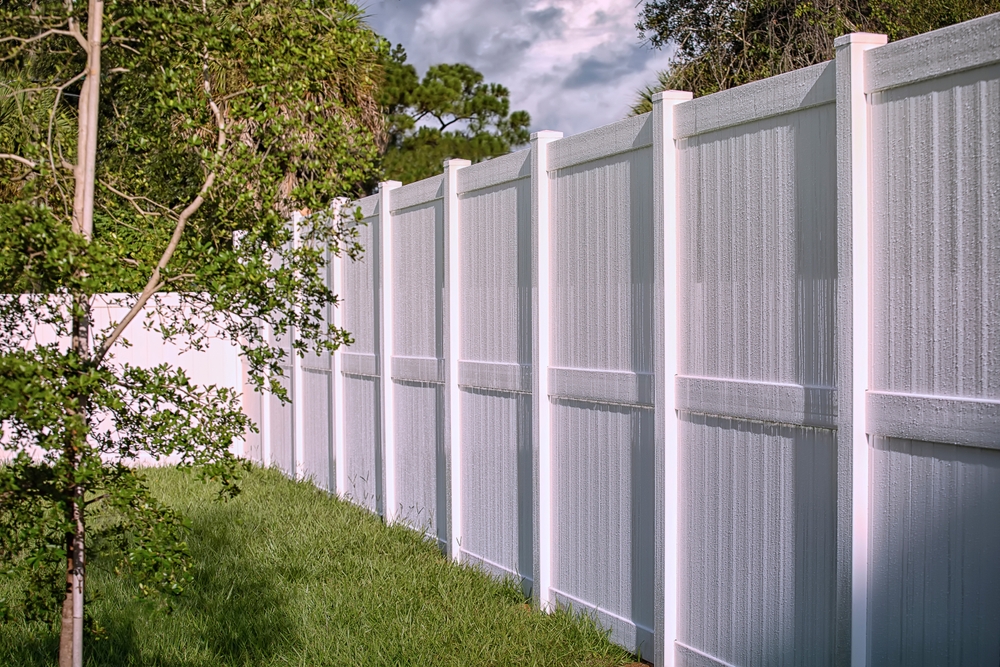
Vinyl fences are a popular choice for homeowners seeking a combination of durability, low maintenance, and visual appeal. Unlike wood or metal fences, vinyl does not rot, rust, or require painting, making it a cost-effective long-term investment. However, like all outdoor structures, it benefits greatly from consistent care and maintenance. Understanding how to properly maintain your vinyl fence not only preserves its appearance but also ensures it lasts for decades without trouble. This vinyl fence care guide will walk you through essential tips and insights to keep your fence in excellent condition year after year.
The Importance of Regular Cleaning
One of the simplest yet most important vinyl fence maintenance tips is regular cleaning. Over time, your fence will accumulate dirt, dust, pollen, and even mildew, especially in damp or shaded areas. These contaminants not only dull the surface of your fence but can also harbor bacteria and reduce its longevity if left unchecked.
Cleaning your vinyl fence is straightforward and doesn’t require expensive equipment. A garden hose, mild soap, and a soft cloth or sponge are typically all you need. Start by spraying the fence to loosen dirt, then gently scrub the surface with a soapy solution. Rinse thoroughly to remove any remaining suds. For tougher stains such as algae or mildew, a mixture of white vinegar and water works well. Avoid using abrasive cleaners or scouring pads, which can scratch the vinyl surface and make it more susceptible to dirt accumulation in the future.
In areas prone to mold or mildew, adding a tiny amount of bleach to the cleaning solution can help keep growth at bay. Just be sure to thoroughly rinse the fence to protect surrounding plants and grass from bleach exposure. Regularly scheduled cleaning every few months is typically enough to maintain the pristine look of your vinyl fence.
Inspecting for Damage and Preventive Measures
While vinyl is known for its strength and resistance to damage, it’s not entirely immune to the effects of external forces. Extreme weather conditions, accidental impacts, or shifting soil can occasionally cause issues. As part of your routine vinyl fence maintenance tips, perform visual inspections at least twice a year, ideally in spring and fall.
During your inspection, check for signs of cracking, warping, or loose posts. Pay particular attention to areas where panels connect to posts and gates, as these are points of frequent movement and stress. If you find any cracks or damage, it’s best to address them promptly. Small cracks can often be repaired with a vinyl patch kit, while more extensive damage might require replacing individual panels.
Preventive care is equally important. Trim back nearby trees or bushes that may scrape against the fence or drop leaves and sap, which can stain the vinyl. If your lawn equipment tends to bump against the fence during maintenance, consider adding protective barriers or simply exercising more caution when mowing or trimming.
Also, if your vinyl fence includes a gate, inspect the hardware. Screws and hinges can loosen over time. Ensure the gate swings freely and latches properly, as misalignment can stress both the gate and fence posts, potentially leading to larger issues.
Protecting the Fence from the Elements
While vinyl is UV-resistant and generally impervious to moisture, prolonged exposure to the elements can still affect its appearance. Continuous sunlight can eventually fade color, and constant rain or snow can encourage mold growth in shaded areas. Proper positioning and environmental considerations can help mitigate these effects from the beginning, but even an existing fence can be protected with a few thoughtful strategies.
Installing landscaping features like trees or shrubs a safe distance from the fence can provide shade and reduce direct UV exposure. Just be careful not to place them too close, which could lead to scraping or trapped moisture. Using clear UV protectant sprays designed for vinyl can also help prevent fading and keep your fence looking like new. These sprays form a protective barrier that shields against sun damage and should be reapplied annually or as directed.
Drainage is another important factor. Ensure that soil and mulch do not build up against the base of the fence, as standing water can encourage staining and algae growth. Keeping the base of the fence dry and clear allows for better air circulation and reduces the risk of discoloration or mold accumulation.
In winter, avoid letting heavy snow build up against the fence. Snow’s weight and the moisture it holds can cause long-term stress. Use a plastic snow shovel instead of a metal one when clearing near the fence to avoid accidental gouges or scratches.
Seasonal Maintenance Practices
Just as with your home or garden, your vinyl fence benefits from a seasonal maintenance routine. Incorporating fence checks and cleanings into your spring and fall outdoor chores is one of the most effective vinyl fence maintenance tips for long-term durability.
In spring, after winter weather has passed, assess the entire fence line for any signs of frost heave, cracking from cold temperatures, or damage from snow or ice removal. Clean the fence thoroughly to remove any grime or debris accumulated over the winter months. Tighten hardware, oil hinges, and check gate alignment.
During summer, UV rays are strongest, so this is a good time to apply UV protectant if you choose to use one. Also, since vegetation grows rapidly in warm months, be diligent about trimming back overhanging branches and keeping grass or vines from pressing against the fence.
Fall is an excellent time to clean the fence again, removing falling leaves and other organic matter that could lead to mold or mildew. Inspect for any shifting or instability caused by summer storms, and ensure that the posts remain solidly anchored. Preparing the fence for winter by clearing debris and ensuring proper drainage reduces the chance of weather-related wear during the cold months.
While winter doesn’t require much hands-on care, avoid using your vinyl fence as a snow barrier or storage area for firewood and tools. Keep an eye on snow and ice buildup, especially after storms. If ice does form, do not chip at it with metal tools; instead, allow it to melt naturally or use a safe, non-corrosive deicer.
Long-Term Care and Enhancements
Over time, your vinyl fence may benefit from enhancements or upgrades that not only improve its function but also extend its lifespan. One aspect of vinyl fence care that is often overlooked is the tightening or replacing of worn hardware. Screws, latches, and brackets can become loose or corroded, especially if they’re made from metal components exposed to the weather. Stainless steel hardware is a worthwhile upgrade for increased resistance to rust and corrosion.
Consider reinforcing areas of high use—like gates or corners—with additional bracing or supports. These reinforcements help maintain structural integrity in places that experience repeated movement or stress.
For fences installed in areas with unstable soil or heavy wind exposure, installing deeper posts or adding gravel backfill can provide added support and reduce the risk of leaning or shifting over time. Consulting a professional for such upgrades can offer insight specific to your climate and property conditions.
Occasionally, you might want to refresh the overall look of your fence. While vinyl cannot be painted in the same way as wood, it is available in a variety of colors and finishes. If your current fence feels outdated or no longer complements your landscaping, replacing select panels or adding decorative caps and post toppers can revitalize its appearance without requiring a full replacement.
Most importantly, keep a maintenance log. Tracking inspections, cleanings, and any repairs or treatments provides a useful reference for future upkeep. It also proves beneficial should you decide to sell your home, demonstrating proactive care to potential buyers.
Conclusion
By integrating these vinyl fence care guide principles into your routine, you’ll ensure your fence remains a strong, attractive feature of your property for many years to come. With just a little attention each season and timely repairs, your vinyl fence can deliver durability, safety, and curb appeal well beyond its expected lifespan.
Need Vinyl Professionals in Santa Clarita, CA?
Established in 2006, Vinyl Professionals, Inc. is a vinyl fencing supplier located in Valencia, California and providing service to the surrounding areas. We specialize in only vinyl structures — since no two properties are symmetrical, we custom-fabricate any and every project that leaves our shop worldwide according to the customer’s needs and priorities. We fabricate all our orders in our factory with experienced fabricators. In our fabrication shop you will find a state of the art computerized routing machine to ensure precise and clean cut outs for rail lock-ins, no brackets nor screws are used on the exterior of our fencing every rail post and plank interlock into one another and combine as one. Give us a call today!

